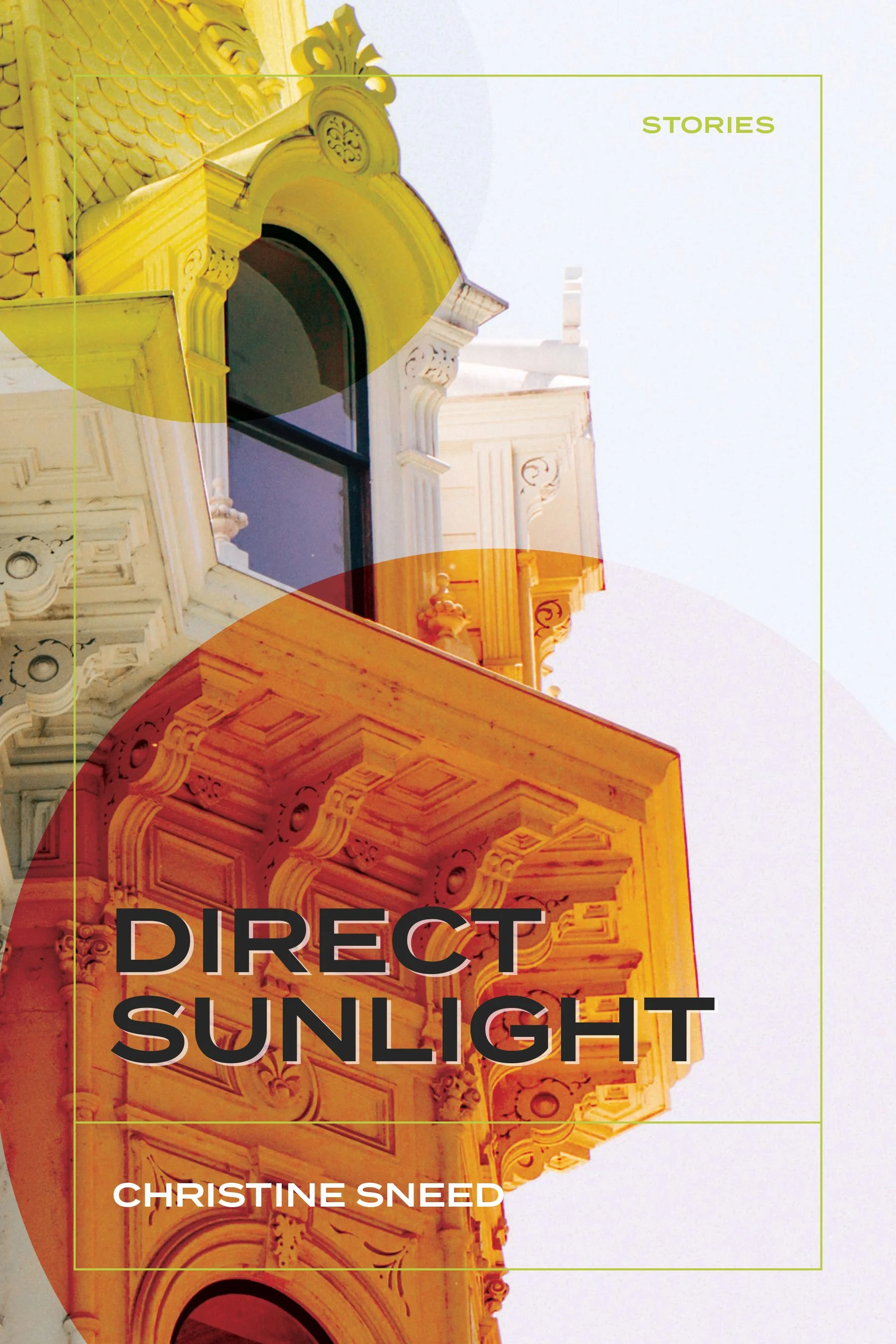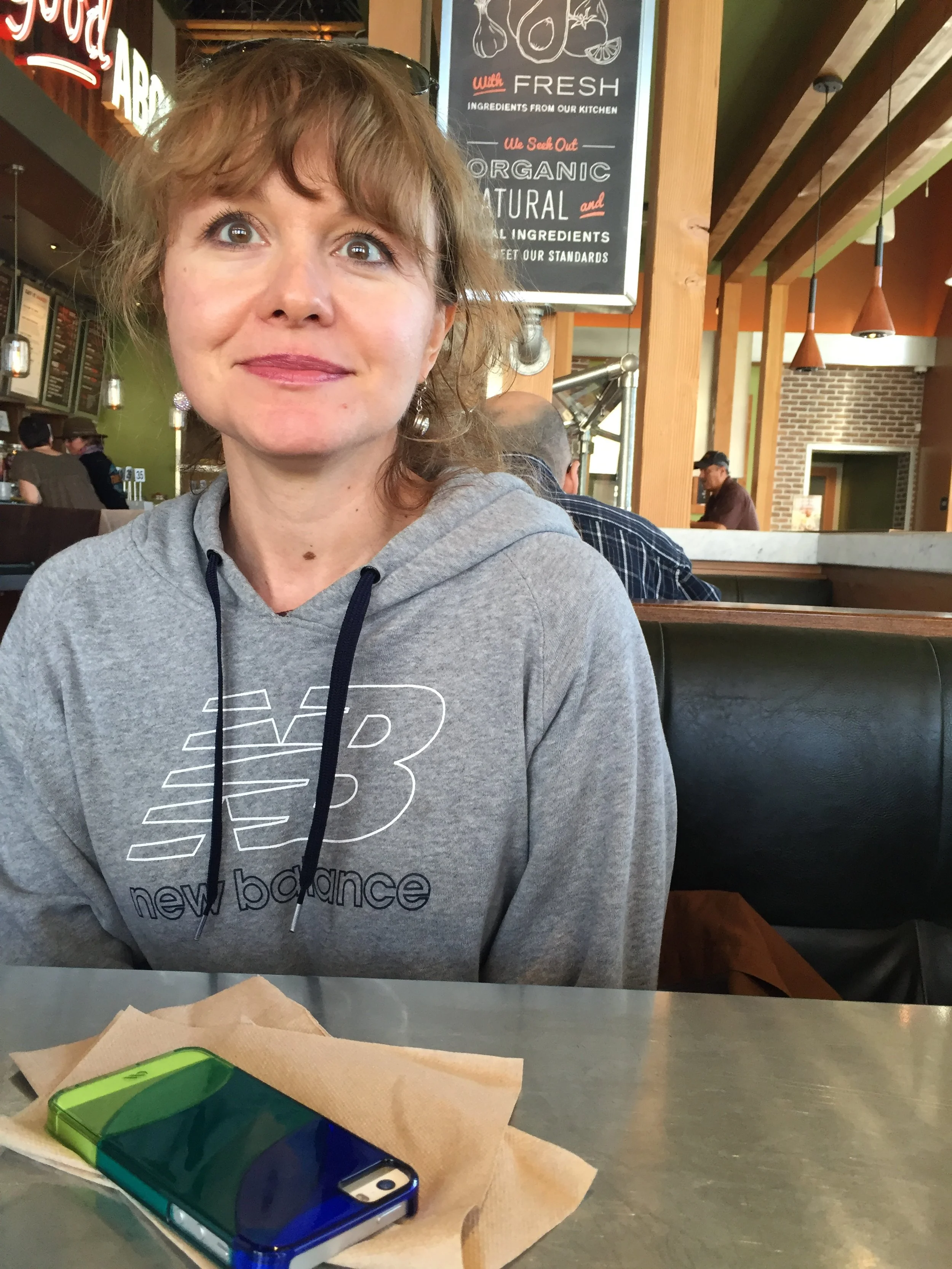Q & A: Christine Sneed Talks About Short Stories, Writing About 'Strangeness," and More
/Where is the line between love and obsession – or are they the same thing? Christine Sneed’s short collection, Direct Sunlight (TriQuarterly/Northwestern University Press), gives us twelve short stories to work through that question and more. In the title story, two adult children learn that their father had a second family long after he died in the 9/11 terrorist attacks. “Mega Millions” shows us what happens when a small-town midwestern factory employee wins the lottery. In “Dear Kelly Bloom,” a young male journalist unexpectedly takes on the role of advice columnist at a Chicago newspaper and soon finds himself replying to a letter from his mother. Across the stories, Sneed’s empathy for the characters never ends, and we find something to love about every single one.
Sneed is no stranger to short fiction, with two previous story collections, Portraits of a Few of the People I've Made Cry and The Virginity of Famous Men, as well as three novels, most recently Please Be Advised: A Novel in Memos. Sneed has received the Grace Paley Prize for Short Fiction, the Chicago Public Library Foundation's 21st Century Award, and has been a finalist for the Los Angeles Times Book Prize. Devin Kate Pope has admired Sneed’s work and guiding-light-presence in the writing community for years and got the chance to ask Sneed about the process of putting together the collection, how she writes characters full of humanity, and how she manages multiple projects at a time.
Q: Can you start by sharing how Direct Sunlight emerged as a collection in your mind? Was there a spark for the book?
A: I’m not sure what the spark for the book was, only that I had a number of recent stories I thought might work well in a collection, and in 2018, I think it was, I put one together. As time passed, the table of contents changed, as did the collection title.
I’ve been writing short stories since I began writing seriously in college (a depressingly long time ago now! Life really does unspool much too quickly), and probably have always loved short form fiction (as both reader and writer) more than the novel. Direct Sunlight had a few other incarnations in the years preceding its publication–at one point, it was called The Common Cold, at another, The Petting Zoo (both are titles of stories included in Direct Sunlight, but other stories in these earlier versions of the collection I’ve revised or taken out altogether). I wrote two new stories for Direct Sunlight at my editor Marisa Siegel’s suggestion–she thought it’d be a good idea to have some previously unpublished material in the book. (One of these new stories, “Wedding Party,” will appear in Electric Literature’s Recommended Reading in early June. Previously, I had assumed it was best to include previously published stories–the implication being that a third party had already declared them worthy of readers’ attention, but I do see why it can be helpful to include one or two new stories, especially if you’re able to publish one close to the collection’s publication date.)
Q: How did you choose which stories to include? Did you have a specific balance in mind for the collection?
A: So much of my writing process relies on instinct, and I do think that’s also true when I put together a story collection. I wasn’t thinking specifically about balance of any kind, but I did first look at the stories I had published in literary journals over the last several years and weighed my emotional attachment to them.
Some, such as “Direct Sunlight,” “The Monkey’s Uncle Louis,” “The Common Cold,” “House of Paine,” and “The Swami Buchu Trungpa,” I knew I wanted to include because I did feel more attached to them than to some of my other recent stories, for reasons that are hard to articulate. But I do think tonally they are of a piece, and they each essentially center on aspiration of some variety–to the point of ruin in a couple of cases–as well as a character’s strong need to be loved and understood. Tone and theme, ultimately, were the main factors that led to which stories made the cut and which ones were left out.
Q: The twelve stories in the collection are distinct; simultaneously, I felt the characters could all exist in the same universe. Did you plan this, or did it come together as you worked on the stories separately?
A: I love this question! I don’t think anyone has ever asked it before now. With each story, unless I’m specifically working on a novel-in-stories, I’m not thinking–at least not consciously–about how one story corresponds to another I’ve already written (unless while writing the newer story, I begin to see repetition–a character’s name, an event, a setting–that brings to mind a previous story.)
That said, I do think my stories are tonally and stylistically similar. My erstwhile editor at Bloomsbury once told me she could tell when she was reading something I’d written because she recognized the voice–which I was flattered to hear. I think what I aspire to in each story and novel I write is a kind of empathy for my characters, especially those that might be called hapless. Ultimately, each story has to have a kind of alchemy that feels like love to me–I love all the characters in Direct Sunlight. I know a story isn’t working if I don’t feel that warmth spreading as I write, and the best way to engender it is through specificity–I want to be able to see and hear the characters in their homes or their cars, or their offices. If I can do that, I love them and usually can make the story work.
Q: Something that struck me while reading was the way the characters dealt with strangeness in their everyday lives. For example, characters acquire strange pets and act like it's normal when their family members are surprised. Can you share more about your interest in how weirdness and mundanity collide? And did you make any discoveries through writing these stories that surprised you?
A: It’s always interesting to me what or whom people become attached to, sometimes to the point of self-destruction. Sometimes they knowingly choose the person or creature or object that is the focus of their love (or obsession), but other times it’s inexplicable, i.e., why we fall in love with one person or one creature, and not another, is largely a mystery, and I suppose in my short stories I’m always addressing that in one way or another.
Why do some of us prefer dark chocolate to milk? Or pink lady apples to golden delicious? So much of our characters, our tastes, our choices, remain in the fog of our psyches, which of course, is one reason why the world is so beleaguered and full of strife. If more of us could understand our impulses, perhaps they wouldn’t wreak so much havoc.
I think many writers, myself included, are acutely interested in the contradictions and conflicts in our characters, the flaws and the questionable choices we make. As I’ve said in other interviews, writers need the flaw to make a story. The flaw is where the tension in my work comes from. I’m always thinking about what happens when a character makes the wrong choice. How can they recover? Or, what happens if they don’t recover?
Q: Direct Sunlight isn’t your first short story collection – you published The Virginity of Famous Men in 2016 and Portraits of a Few of the People I’ve Made Cry in 2010 – which feels like a lifetime ago some days. How was working on those collections different (or similar) to working on Direct Sunlight?
A: I don’t think the experience of putting together Direct Sunlight was significantly different from my previous two collections’ assembly. I did have a larger body of stories to choose from with Direct Sunlight, however, and examining this body of short fiction made me realize many of the stories that have appeared in journals would be strange bedfellows with each other, and so I don’t know if some of them will ever end up in a collection. The strange bedfellows are, in some cases, experimental or what I think of now as overly jokey or precious. But perhaps when I looked at them, my gaze was overly harsh, and I’ll go back to them at some point and feel more generous toward them.
Q: Speaking of publication, you had a new novel (Please Be Advised: A Novel in Memos) out in October 2022. I imagine there was a good deal of overlap between working on Please Be Advised and Direct Sunlight. How do you manage the work of multiple book-length projects at the same time? What’s the process like for you?
A: I might have been writing one or two of the short stories in Direct Sunlight during the time I was writing Please Be Advised, but I honestly don’t remember. I wrote most of Please Be Advised in 2017 and 2018 (there was a four-year gap between its writing and publication in part because I was told by the agents who saw it that it wasn’t a real novel, or they didn’t see it as a “big book,” i.e., a book that would make a big splash commercially–which I was told I needed because of my status as a midlist author. Consequently, Please Be Advised wasn’t submitted to a corporate press by an agent, and I didn’t try to publish it on my own for a while because I wasn’t sure where to go with it, but eventually, I heard from an editor at 7.13 Books, Kurt Baumeister, who is also a fiction writer. Once he read it, he was very enthusiastic about PBA, and off we went.)
I do sometimes write short stories while also working on longer-form fiction. Writing a short story with a novel-in-progress on your desk, too, is usually a relief–it feels like playing hooky! At the start of a new short story, I can often see the way through to the end, even if I don’t know what will happen until I write it.
Q: With the last year or so full of getting two new books published, what are you working on/thinking about/excited about next? How do you get into a new project after sending a book out into the world?
A: In this age of serious attention hijackers (which has created for many of us a tendency to live in “the shallows” - also the title of a book on the topic by Nicholas Carr)—I’m distractedly working on three novels. Two aren’t far from completion, but I find my energy and, predictably, my attention unreliable from one day to the next. I work several part-time jobs so that definitely doesn’t help - there is always something to do, and I need to get better about focusing. It’s like training yourself for a marathon–you need to be ruthless.
Devin Kate Pope is a writer and editor who calls Tempe, AZ, home after growing up all over the U.S. Her work focuses on interdependence, generational trauma and healing (especially connected to alcoholism and sobriety), and sensual delights. Her writing has appeared in The Rumpus, Rejection Letters, and Compound Butter, and she writes a weekly newsletter on art, books, food, and Arizona creatives at devinkpope.substack.com.











